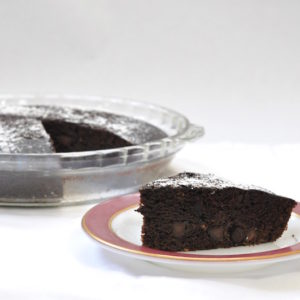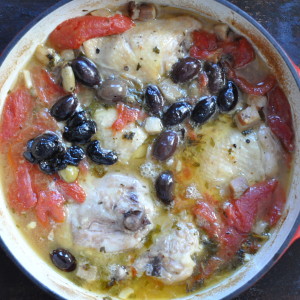Fava Beans and Peas with Creme Fraiche
This was one of those recipes I never planned to blog. But then I made it, and we agreed it was fantastic, so I jotted down what I’d done on my grocery list (yes, a paper list). You know how this story ends, right?
Sure, I could excuse my foolishness by saying I’ve been preoccupied by John’s recovering, but he’s back at work. The truth is, as I creep toward 50 (gulp), the steel-trap memory I once prided myself on is eroding like a chalk cliff. Not that I’ve ever seen a chalk cliff. What the hell am I talking about, anyway?
The good news is, my cooking isn’t ever complicated. I’ll never be somebody whose recipes have multiple sauces and reductions and fancy torched toppings. The food I cook is never plated with tweezers or edible moss or God forbid, accompanied by an I-pod. There’s a place in the world for food like that. Just not a place called the Insufficient Kitchen.

This is a long-winded way of telling you fava beans and peas with crème fraïche, and incidentally, a little mustard, was easy to replicate. I should add, in the spirit of modesty, that it is fantastic not because I am such a talented broad, but because fava beans and peas are in season, and they are fantastic. Further modesty: the idea for this recipe comes from Yotam Ottolenghi’s Plenty More, wherein lives a recipe entitled Peas With Sorrel And Mustard. Although my recipe departs radically from Ottolenghi’s, my idea is based on his recipe, so credit is due him.

You can see these aren’t the primo-est of peas. Unless you garden, or belong to a CSA, starchy is the name of fresh pea game. People can get sniffy over fresh peas. They’ll also go on at length about asparagus spears and corn. Nor are they wrong. But as a committed non-gardener, I am perfectly content with slightly starchy fresh peas. If you are not, the frozen pea is a dignified thing, possibly the only vegetable that freezes beautifully. So buy yourself an enormous bag and be happy.
Moving on to the fava bean. I did not make its acquaintance until I began shopping at Berkeley Bowl Market, meaning I was in my thirties. I thought Mollie Katzen who had instructed me in the art and science of favas, but a visit to her oeuvre disproves this. More likely it was Alice Waters, in Chez Panisse Vegetables, because heaven knows everyone on Team Alice loves the fava bean. And now I do, too, their slightly fussy prep notwithstanding.
Fresh fava beans become available in spring, fading away around mid-July. If your sole experience of fava beans is Anthony Hopkins, I beg you to try them. They’re slightly bitter in the best possible way, a fresh bitterness that plays well with almost any summery veggie: green or wax beans, artichokes, added to salads. Fava beans are also wonderful cooked into softness and mashed into a paste, which you then spread on bread or use for dipping (or wolf with a spoon). Or you can sauté fava beans with peas, crème fraïche, and a little mustard.

But first you must peel them. Skilled fava observers will note the above bean would never pass Alice Waters muster–it’s no infant–but it’s fine by me. The furry pod is inedible. So are the inner pods, or podlets, shall we say, enrobing each bean. These are most easily peeled by dropping the beans into boiling water for 2-3 minutes. This softens the rather tough casing while giving the bean a bit of a pre-cook. Once that’s off, easily pierced by your thumbnail, your bean is ready. In fairness, I should warn you of the fava bean’s escape tendencies, also noted by Tamar Adler in An Everlasting Meal:
“Favas launch and bounce, so be prepared to chase them down.”
Granted, this all sounds a performance, as the English say. Provided you’re in the right frame of mind, it can be quite relaxing; the peeling goes quickly, chasing or no. David Tanis and Alice Waters say children love peeling fava beans, adding it’s a charming multigeneral chore. Me, I am Garbo in the kitchen: I want to peel alone.
Amounts of fava beans versus peas are flexible. I made this with 1 1/2 pounds of favas and 3/4 pound peas. There were more peas, but an attack of stupendous hunger saw to that. Besides, the bean police aren’t going to come knocking.
 Since we’re in English slang mode, feel free to push the boat out and add a few artichoke hearts, should you be so moved.
Since we’re in English slang mode, feel free to push the boat out and add a few artichoke hearts, should you be so moved.
This is a dish you should taste while cooking. Depending on their age, your peas and beans may need more or less cooking. You may prefer more or less mustard. So long as you avoid oversalting and don’t crank the burner too high, it’s hard to mess up. Just try to leave some for whoever else is eating.
About crème fraïche: authentic French soured cream is pretty much impossible to get in the United States. However, good commercial versions are available here. I purchase Bellwhether Farms in 7.5 ounce containers. If you have difficulty finding commercial crème fraïche, I’ve included a recipe below. It’s easy–mix heavy cream with yogurt and let it sit overnight on your counter.

Fava Beans with Peas, Crème fraïche, and Mustard
yield: 2 cups, shucked, approximately 3-4 servings
prep time: approximately 1 hour, most of which is bean peeling
1 1/2 pounds fava beans
3/4 pound fresh peas
olive oil, for the pan
1 garlic clove, peeled and sliced thinly
1 scallion, peeled, trimmed, sliced into thin rings, white and light green parts
1 tablespoon crème fraïche, commercial or home-made (recipe below)
1 teaspoon Dijon or Amora mustard (I used Amora)
generous squeeze lemon (I used a quarter of a large Meyer lemon)
salt and pepper (go easy on salt, as mustard can be salty)
—
Crème fraïche: from David Tanis’s A Platter Of Figs
2 cups organic heavy cream
1/4 cup full-fat yogurt or buttermilk
We’re starting backwards here, you’ll need to start the night before if you’re making crème fraïche.The cream must be organic, and not heavily pasteurized, because good bacteria is necessary for crème fraïche.
In an immaculate glass or ceramic bowl, mix the cream with the yogurt or buttermilk. Cover with a clean towel. Leave on your counter 12-24 hours.
The cream will thicken. Decant into a refrigerator-safe container. Keeps for two weeks (or slightly longer).
To peel the fava beans, half fill a saucepan with water and place it on the stove. Turn heat to medium. Place a strainer in the sink.
Set up two bowls and either your compost bin or trash can. Work according to your dominant hand. Start with the pods in one bowl. Strip the beans from the pod, place them in the second bowl, and toss pods in compost or trash. When all the beans ready, crank up the burner and toss beans into the pot. After a couple minutes, test a few beans by tossing them in strainer and running cool water over them. Peel. If the outer skins come off easily, turn off burner and lift remaining beans out with a slotted spoon. If not, cook a little longer. When beans are ready, transfer to strainer with slotted spoon. Save the water in the pot.
While favas cool in strainer, turn to peas, podding them the same way you shucked the fava beans. If peas are very starchy, you may wish to parboil them. If so, toss them in the fava bean-cooking water for a few minutes. If not, leave them in the bowl.
By now, fava beans will be cool enough to handle. You can peel them straight from strainer or tip them into the free bowl.
If you are parboiling peas, skim them into strainer to cool. Water in the pot can be using for washing up.
To peel outer skins off fava beans, pierce them with your thumbnail.
For the final cooking, place a deep sauté pan on the stove–I used a 3 quart pan measuring 12 inches across. Add about 1 tablespoon of olive oil and turn the heat to medium. Add the garlic and scallion. Cook, stirring, so the aromatics soften, losing their bite without browning. Add the peas and favas. It’s better to keep the heat low and cook this dish longer, especially if using commercial crème fraïche, which can break at high heat.
Add the crème fraïche and mustard, stirring constantly, ensuring each blends with the beans instead of sticking or clinging. Add salt and pepper. Add lemon, stirring. Taste for seasoning. Crème fraïche is very rich and can muffle flavors, which isn’t the aim here. Does the dish need more lemon? mustard? Do the beans need more cooking? They could need anywhere from 2-10 minutes depending on their freshness.
We like this with fish. It would be lovely with pork, chicken or stirred into pasta. I don’t see it with red meat, but that’s personal preference only.
Notes: You can use any ratio of fava beans to peas. Frozen peas also work well here.





